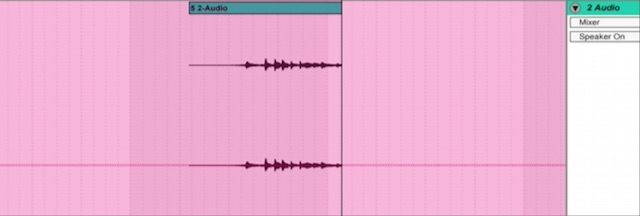Sampling from old records can be a great way to get inspiration from generations and times past. Vinyl is also a great source of analog tone to craft, mangle, and tune. In this quick tutorial, Mad Zach shares his techniques for building a unique soundpack out of a simple vinyl sample.
Sample Vinyl Records To Build A Soundpack
Mad Zach Pro Tips: Finding A Sample
When you’re looking for a sample, it’s good to identify a part of the record where one of the instruments is isolated. Often these sections are located at the beginning or end of the track. On old records I’ve found that often the darker, more twisted tracks are featured on the B side. Make sure to check both sides!
A common technique for searching the entire record quickly is to move the record needle around, listening for about 5 to 10 seconds between each movement. Use your hand to spin the record backwards and forwards looking for something tasty.
Recording record movement can be cool as well – use the pitch fader to slow down or speed up samples before recording them. If you turn off the motor so that the record isn’t spinning, you can move the record around at variable speed in either direction, creating cool effects.
One of my favorite tricks is to turn off the power on the turntable, but continue recording as the record slowly slows down until it’s not moving anymore. This creates a cool pitch dive slow down effect that I like to use my finger drumming routines.
Remember that you can use the EQ and filter on your DJ mixer to get the samples sounding awesome before they even hit the computer. You even can run the turntable through some hardware effects like delay, reverb, and filters – all before recording.
Recording the Sample

Recording the sample should be pretty straightforward. Make sure to run a cable from your DJ mixer into your audio interface, and route that signal onto a new track in your DAW.
I like to record my vinyl samples at 96 kHz sometimes, because when you record a high sample rate, you can slow the samples down dramatically and they will stay crispy and fat. For that classic MPC-style sound, you’re going want to choose 16-bit, because that’s the old school way (and it still sounds dope).
Secure Your Drum Sounds
I usually start with some cool drum sounds already loaded up in the drum rack. With drums in place beforehand, it’s easier to search for hooks and try them out immediately over a beat. For this video I grabbed some of my favorite drum one-shots from Volume 5 of my latest Mad Zach finger drumming soundpacks.
Loading The Sample To Drumrack

Once you’ve recorded your sample, drag it onto a new cell in your drum rack and hit the corresponding button on your controller to trigger the sound. Continue tapping that pad/button while moving the start point within Simpler, searching for tasty bit.
When you found a nice section to work with, it can be cool to try pitching down an octave, reversing it, filtering, or even adding warping (more on that in a future video!).
With the first sound tuned and dialed, I usually copy it onto one or two other empty slots in the drum rack and adjust the pitch on those new instances to make a playable melody.
A Word On Sound Placement + Finger Drumming
Even though Ableton’s Drum Rack has 127 slots available, I like to keep my sound count to 16 or under at first. This allows me to keep the idea focused and use my finger drumming muscle memory to generate ideas instantaneously.
I also like to put the same kinds of sounds on the same slots. For example, the bottom two rows are mostly all drum sounds. The top two rows are usually filled with atmospherics, hooks, bass sounds, risers, etc. If things get really wild, you can always fill up more than 16 cells – but I recommend starting small. It’s better to generate a focused idea (do one thing well) before introducing too many other variables.
A quick note on legal issues related to samples: Sampling is subject to copyright laws, and you generally can’t sample someone else’s work without their permission. If you’re not making money on it, it might be fine for personal use – but be careful.





